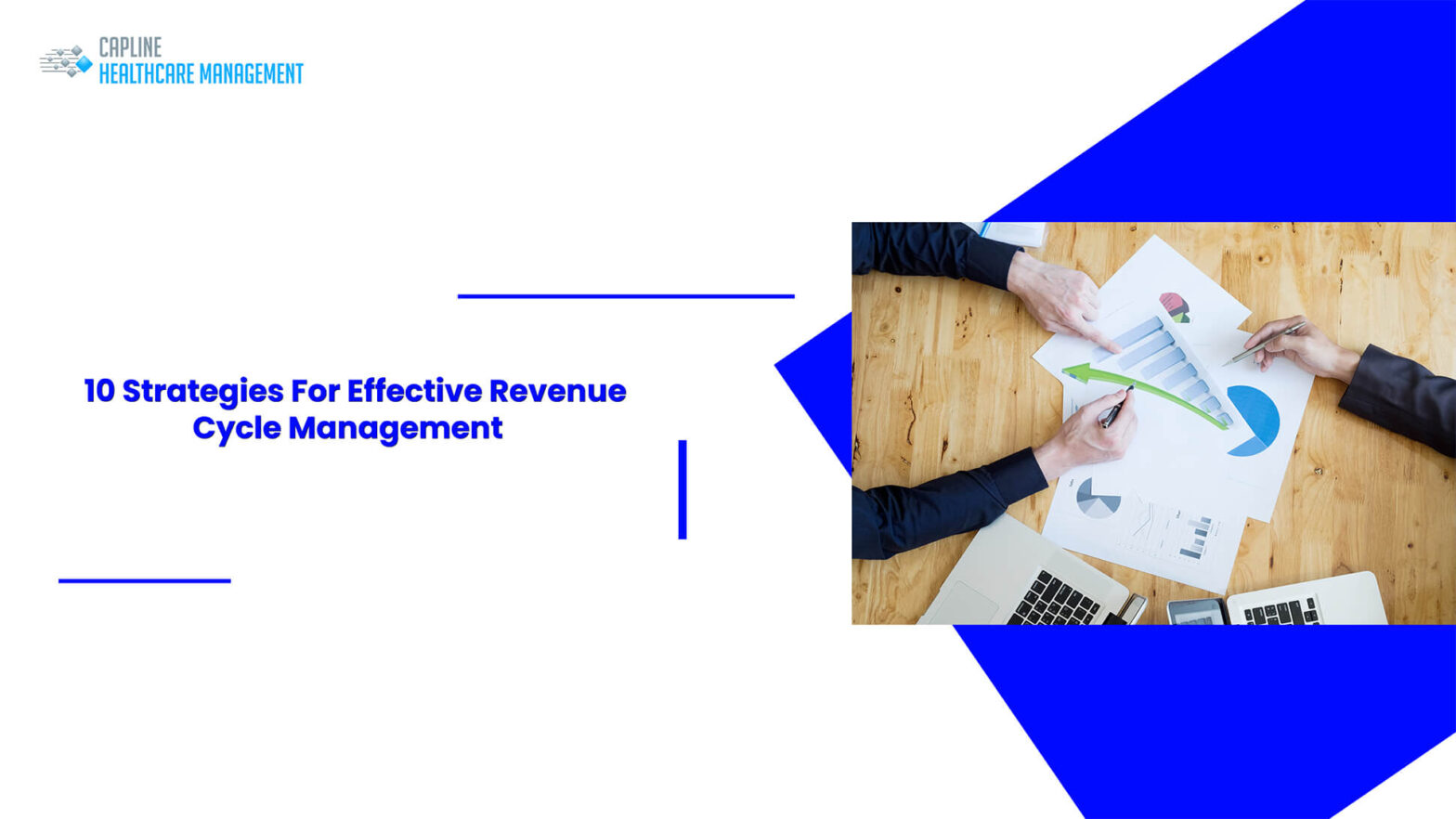10 Strategies For Effective Revenue Cycle Management
Revenue cycle management provides the backbone of financial stability for any healthcare organization, it ensures that revenue starts coming in on time after the delivery of services. However, mere management alone will not suffice, one has to optimize revenue cycle management. A revenue cycle requires a strategic approach for optimization. So let’s dive deep into the strategic approach towards effective RCM.
In this article, we have highlighted 10 ways to create efficiency, and smooth operations while capturing maximum revenue.
1. Robust Front-End Processes
Successful foundation revenue cycle management is the presence of appropriate front-end processes, including the following: correct collection of patient data, assessment of eligibility for insurance, and financial counseling. This would ensure that the first step in the process is done accurately to avoid, or at least minimize, claim denials and delays downstream. So, that your organization minimizes revenue leakage by correctly billing patients at the outset.
2. Insurance Eligibility Verification
Eligibility verification before the rendering of services is always a major factor in the cycle of healthcare revenue. Due to frequent inaccuracies and incomplete insurance data, denials occur, which are expensive to correct. Integrating automated insurance eligibility verification tools into your workflow will ease the process and reduce denials of claims. This will save not just hours but also enhance the bottom line of your organization.
3. Identify Correct Charge Capture
Charge capture refers to the documentation and charging of every service performed on a patient during a visit. Any mistake or error committed in charge capture will lead to a loss of revenue. I strongly recommend the review of all charges to make sure all charges are correctly documented and billed appropriately.
A good charge capture system is integral in the capture of all billable services correctly. So, ensure that your system is user-friendly, and charges are promptly entered into it. Provide regular review of charge capture data to make sure there are no discrepancies in under-coding. Additionally, investing in some coding training for the staff can reduce errors in this very important step of the revenue cycle by huge margins.
4. Manage Claims More Efficiently
Efficient claims management is quite important to ensure timely reimbursement from payers. I’ve seen organizations struggle with belated payments due to incomplete or incorrect claims. Advanced claims management software allows you real-time tracking of the status of claims and the identification of errors that may exist for correction before submission. Automation can take it to a whole new level, enhancing accuracy by reducing entry errors manually, which in turn speeds up the entire process of the claims’ life cycle.
5. Improve Patient Billing Processes
Patient billing is the most painful process in the revenue cycle of healthcare, but it doesn’t have to be this way. Simplify your statements of patient billing and make as much flexibility as possible in the modes of payment, and you will be enhancing patient satisfaction while accelerating the collection of revenue. My suggestions would be to take on clear, understandable billing formats and online options for payment ease of experience. When patients understand their bills, they are more likely to pay on time, reducing outstanding balances.
6. Staff Training
Training of your staff is the keystone in revenue cycle management. Everyone counts, from the front desk personnel to the billing personnel, each important in their place within the RCM process. Ongoing education in coding, documentation, and compliance keeps them current and efficient in their work. Training keeps everyone on the same page with recent changes and new requirements that will affect how you do business.
7. Harnessing Data Analytics for Performance Enhancement
Data analytics are a strong tool in revenue cycle optimization. Analytics for KPIs, such as days in A/R, denial rates, Net collection ratio Gross collection ratio, and claim acceptance rates, are representative areas that create a need for development. By leveraging such insights from data-driven analytics, you are set to apply informed decisions and changes that benefit your RCM process. I have found that an organization observing its KPIs regularly has ensured there is proper cash flow.
8. Automate to Increase Efficiency
Among the best ways to optimize your revenue cycle is through automating repetitive tasks with reliable automation. In addition, verification of insurance automates regular RCM tasks, freeing your resources to deal with high-value areas like denial management and patient engagement. Automation reduces the risks associated with human errors, thus streamlining the revenue cycle process.
Conclusion: Streamline Your RCM Process
Revenue Cycle Management requires a strategically crafted approach toward every phase, from the front-end operations to the back-end collections of the process. These 10 strategies will enhance the efficiency of your healthcare revenue cycle, reduce denials, and maximize revenue.
Optimization of revenue cycles is not something you do once; it’s an ongoing process that requires continuous improvements. In other words, if you put in place the right tools, processes, and team, your organization is well-placed to be successful financially while providing outstanding care to your patients.
Effective RCM not only ensures timely reimbursement but also enhances patient satisfaction and overall operational efficiency.




